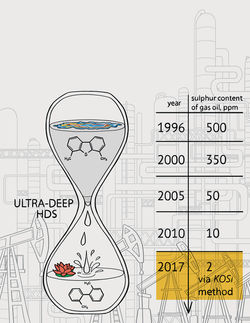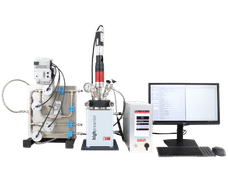Second-generation Biofuels Heading Steadily towards Commercial Success, Asserts Frost & Sullivan
Advertisement
The utilisation of second-generation bio feedstock, such as agricultural residue, forest residue and black liquor, is currently limited to power generation in combined heat and power (CHP) plants or regeneration units. Second-generation bio feedstock has been extensively researched as a potential source of liquid fuels for transportation. Over time, technological advances are poised to make second-generation biofuels commercially viable.
New analysis from Frost & Sullivan, Worldwide Market Analysis of Second Generation Biofeedstock, finds that pre-treatment and gasification technologies are on the verge of making second-generation biofuels a commercial reality. Developments in the pre-treatment and gasification of bio-feedstock through discrete hydrolysis and fermentation and gasification and catalytic synthesis, respectively, have the potential to reduce the production costs of second-generation biofuels.
“The use of second-generation biofuels is expected to reduce the emission of green house gases, particularly carbon dioxide, from combustion engines by 80 to 85 per cent in comparison to conventional fossil fuels,” notes Frost & Sullivan Senior Research Analyst Phani Raj Kumar Chinthapalli. “The lifecycle emissions for second-generation biofuels are in the negative range, which implies consumption of carbon dioxide rather than emission.”
Major automobile companies are investigating the environmental benefits of second-generation biofuels. They are looking at reducing emission levels while remaining competitive with the use of corn or maize that can be deployed as bio-feedstock for transportation fuels.
Climate change related to green house gas emissions is on every company’s watch list these days. Industries ranging from chemical to construction and automotive are interested in achieving sustainability across their value chains.
“In addition to supporting energy efficient processes in industries, second generation bio-feedstock and the technologies used to convert them into biofuels are expected to lower green house gas emissions in the transportation sector,” says Chinthapalli. “The commercial production of second generation biofuels is poised to reach 5 billion gallons per year by the end of 2015.”
Current second-generation biofuel plants, on a demonstration scale, use a single bio-feedstock source, either forest residue or agricultural residue, among others. However, it will take some time before the supply chains of these different feedstock sources are better established. This development will parallel the commercialisation of second-generation biofuels.
“The future of biofuels plants will lie in effectively converting multiple feedstock to biofuels,” cautions Chinthapalli. “These multiple feedstock supplies must be constantly replenished and the technology should optimally convert the entire range of economically viable second generation bio-feedstock.”
Second-generation biofuels will slowly, but surely, have an impact on energy share globally. This impact may not be significant in the short term. Unless technology winners introduce large-scale plants at an affordable rate, such change is unlikely to occur until the end of 2017.
“Beyond 2017, the impact is likely to be very high,” comments Chinthapalli. “At this stage, second-generation biofuels will contribute not only to enhancing a country’s energy security, but also to providing its transportation industry with a sustainable source of energy.”
Overall, it promises to be a win-win situation. Several paper mills have the option of changing their recovery boilers to gasification units because of the technological breakthrough in black liquor gasification. Farmers and forest owners are set to benefit with the diversification of their products. The diversification of waste products to include corn stover and forest residue will add value to the waste, while introducing an alternate supply chain for forest and agricultural co-operatives.
Other news from the department business & finance
These products might interest you
Most read news
More news from our other portals
See the theme worlds for related content
Topic world Synthesis
Chemical synthesis is at the heart of modern chemistry and enables the targeted production of molecules with specific properties. By combining starting materials in defined reaction conditions, chemists can create a wide range of compounds, from simple molecules to complex active ingredients.

Topic world Synthesis
Chemical synthesis is at the heart of modern chemistry and enables the targeted production of molecules with specific properties. By combining starting materials in defined reaction conditions, chemists can create a wide range of compounds, from simple molecules to complex active ingredients.



































































